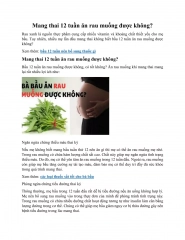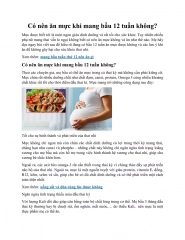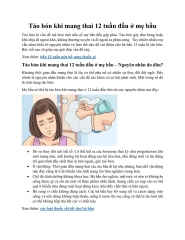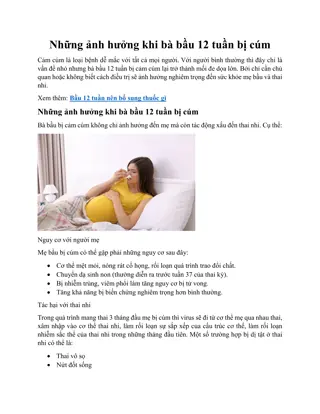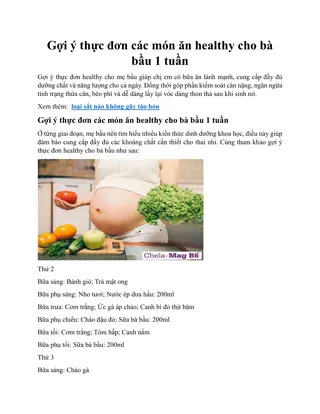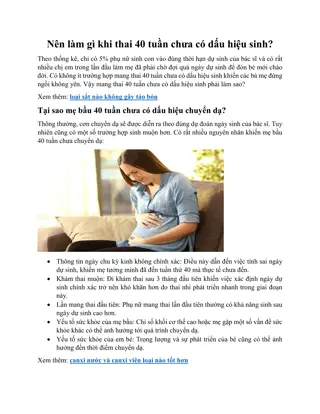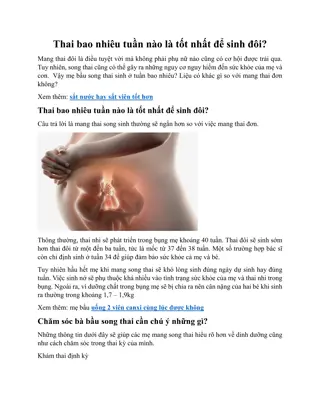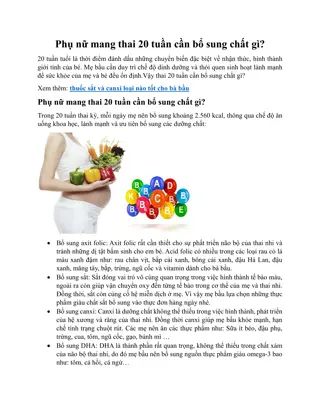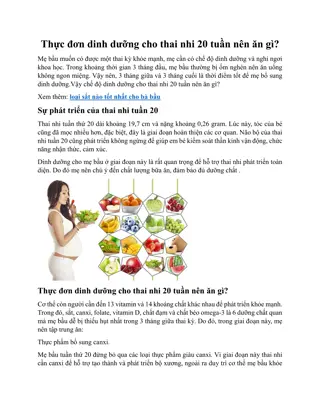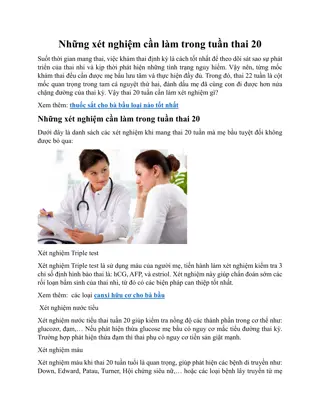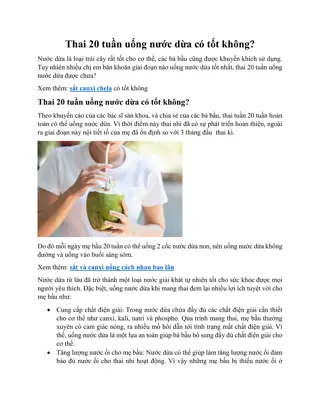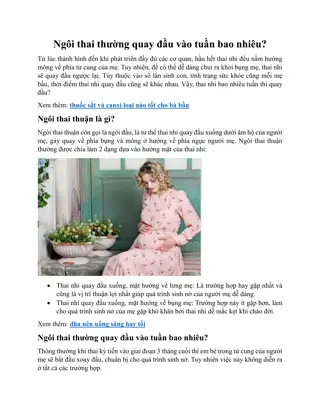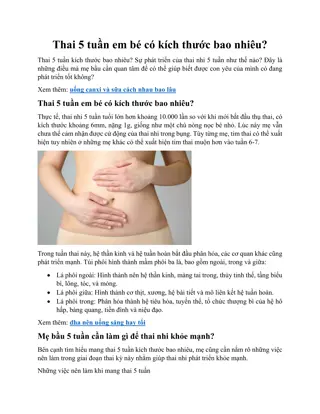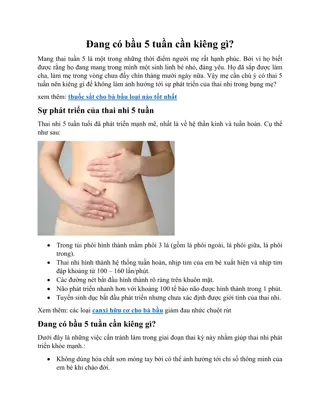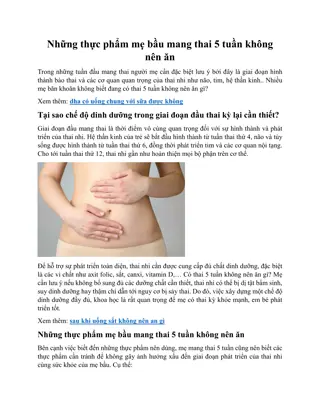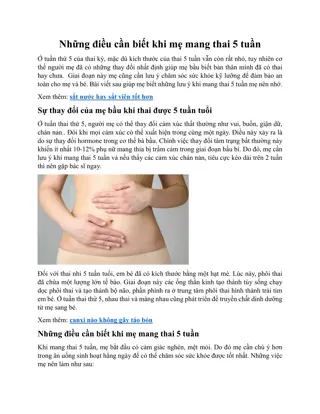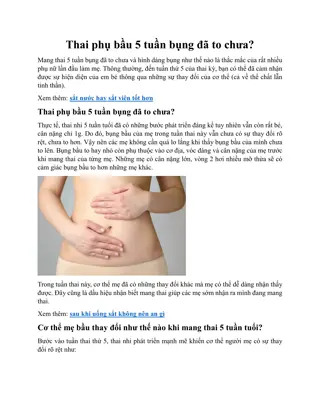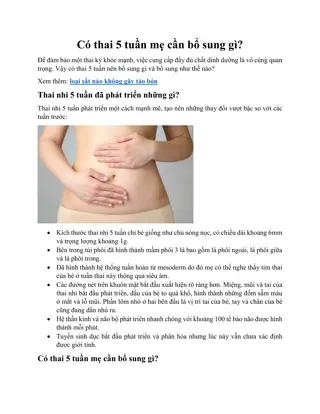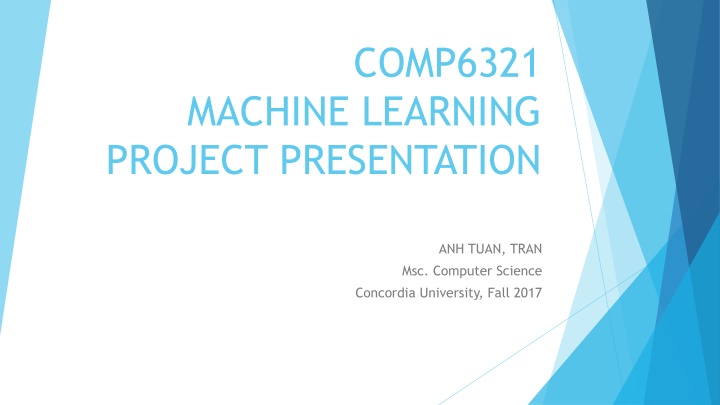
Machine Learning Project on Fatigue Prediction
Explore a machine learning project presented by Anh Tuan Tran, MSc in Computer Science, Concordia University, focusing on predicting fatigue levels due to sleep deprivation among rolling-shift workers. The project utilizes decision trees and random forests to analyze data collected from subjective and objective measures. Learn about the utilization of bootstrap methodology for error prediction and the comparison of accuracy in classifying different levels of fatigue.
Download Presentation

Please find below an Image/Link to download the presentation.
The content on the website is provided AS IS for your information and personal use only. It may not be sold, licensed, or shared on other websites without obtaining consent from the author. If you encounter any issues during the download, it is possible that the publisher has removed the file from their server.
You are allowed to download the files provided on this website for personal or commercial use, subject to the condition that they are used lawfully. All files are the property of their respective owners.
The content on the website is provided AS IS for your information and personal use only. It may not be sold, licensed, or shared on other websites without obtaining consent from the author.
E N D
Presentation Transcript
COMP6321 MACHINE LEARNING PROJECT PRESENTATION ANH TUAN, TRAN Msc. Computer Science Concordia University, Fall 2017
OUTLINE PROJECT OVERVIEW MACHINE LEARNING BOOTSTRAP
PROJECT OVERVIEW (1) ROLLING-SHIFT WORKERS LEVEL OF FATIGUE AFFECTED BY WORK SCHEDULE SLEEP PATTERNS LEVEL OF FATIGUE MEASURED BY (AMONG OTHERS) PVT (PSYCHOMOTOR VIGILANCE TEST) DATA COLLECTED BY SUBJECTIVE MEASURES: QUESTIONNAIRES (5 TIMES DAILY) OBJECTIVE MEASURES: ACTIWATCH (WEARABLE DEVICE) Sleep measurements in time series
PROJECT OVERVIEW (2) OBJECTIVES PREDICT THE LEVEL OF FATIGUE AS A RESULT OF SLEEP DEPRIVATION HOW WE DO IT? Decision Tree Random Forests
MACHINE LEARNING Simple understanding? # 1 2 3 X Y 1.5 2 Model 1.7 2.2 2 2.5 How good is ? Is it good? Is it too good? Cross-Validation Bootstrap
Bootstrap How-to? (1) # 1 1 3 X Y 1 1.5 2 1.5 2 2 2.5 ? 1 # 1 2 2 X Y # 1 2 3 X Y 2 1.5 2 1.5 2 ? 2 1.7 2.2 1.7 2.2 1.7 2.2 2 2.5 Original Data set (Z) # 1 2 3 X Y b 1.5 2 ? ? 1.7 2.2 2 2.5
Bootstrap How-to? (2) Draw a set of ? of same size from Z, with replacement Use ? to calculate an estimate Repeat the process for a number of times (10.000+) We got B bootstrap data sets ? 1,? 2, ? ? and corresponding estimates 1, 2, ?
Using Bootstrap in Error prediction Bootstrap data sets as training data Original sample as validation data Problems? Yes! Observations appear both in bootstrap AND validation data This will underestimate true prediction error
A little bit comparison (1) Data set 497 records, in 3 classes 479 in Green class 13 in Yellow class 5 in Red class Decision Tree gives: 93.8% accuracy 21 Green classified as Yellow 10 Green classified as Red
A little bit comparison (2) Random Forests gives: 96.8% accuracy 14 Green classified as Yellow 2 Green classified as Red Random Forests with Bootstrap gives: 99.2% accuracy 4 Green classified as Yellow 0 Green classified as Red

